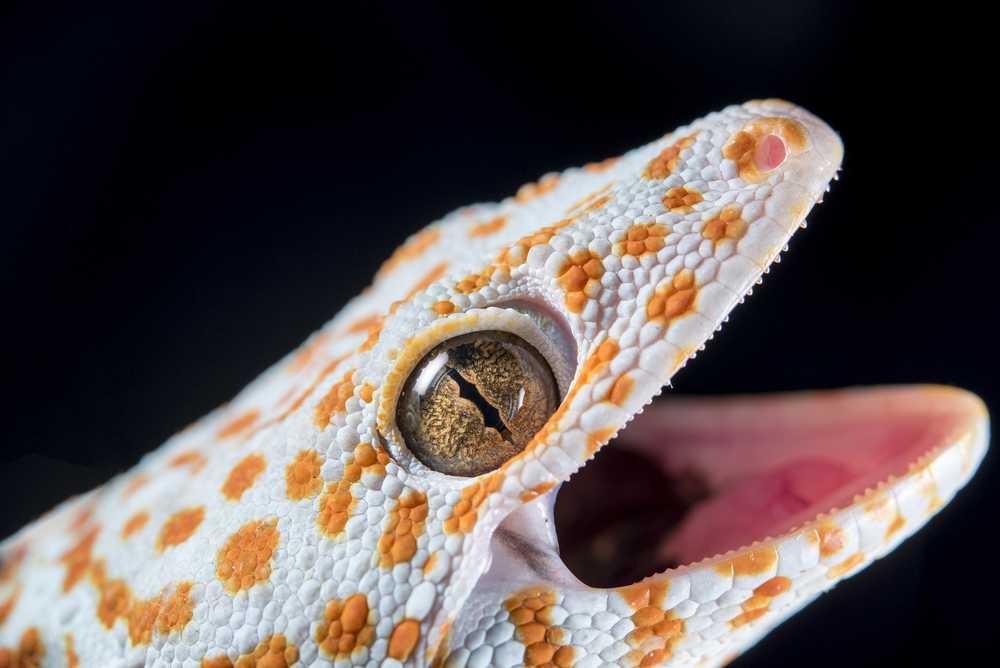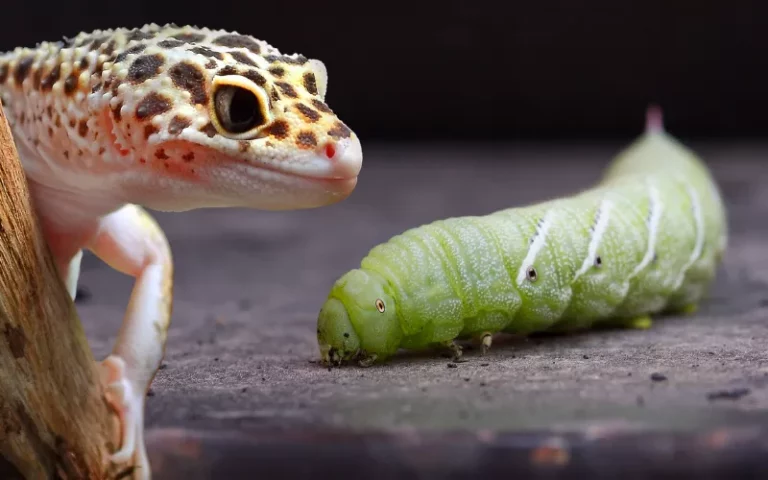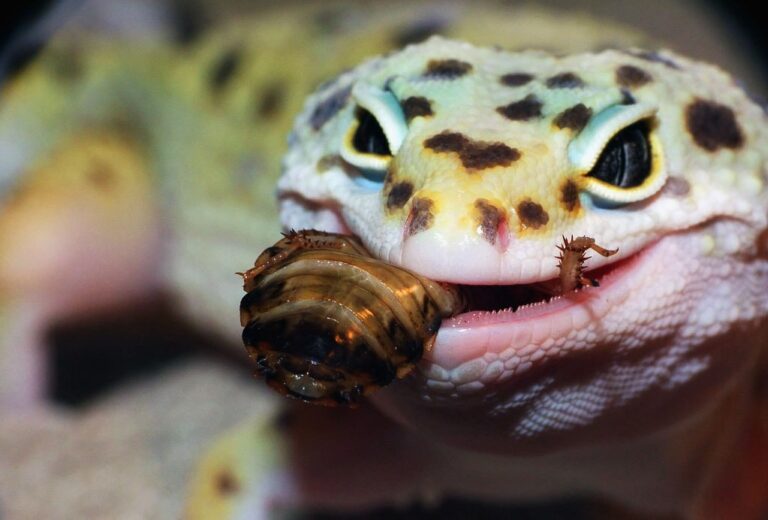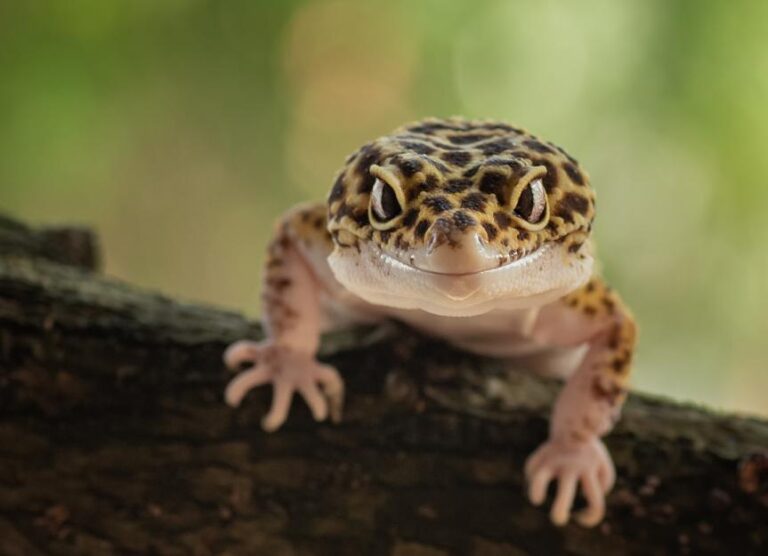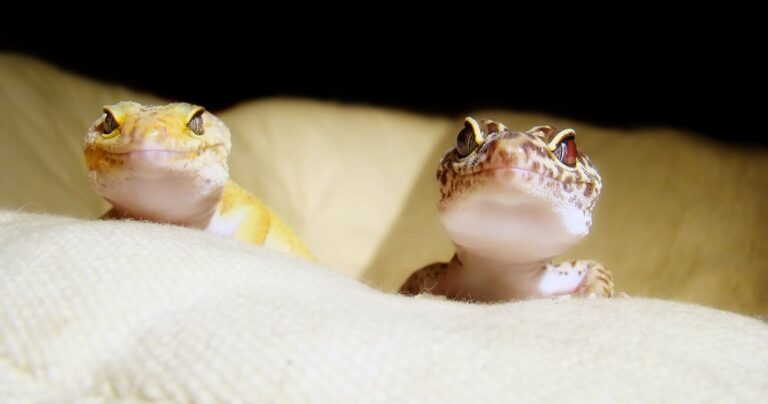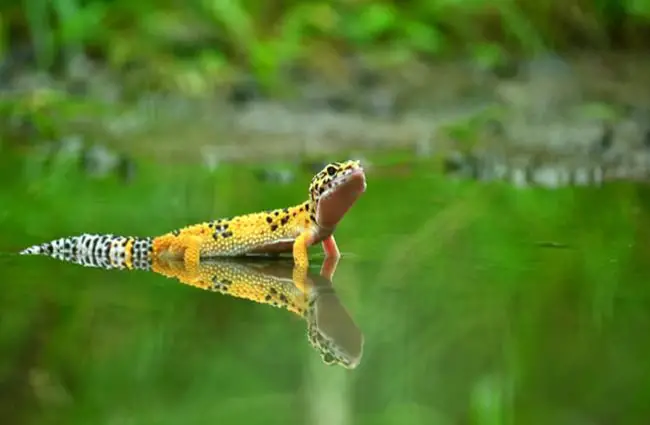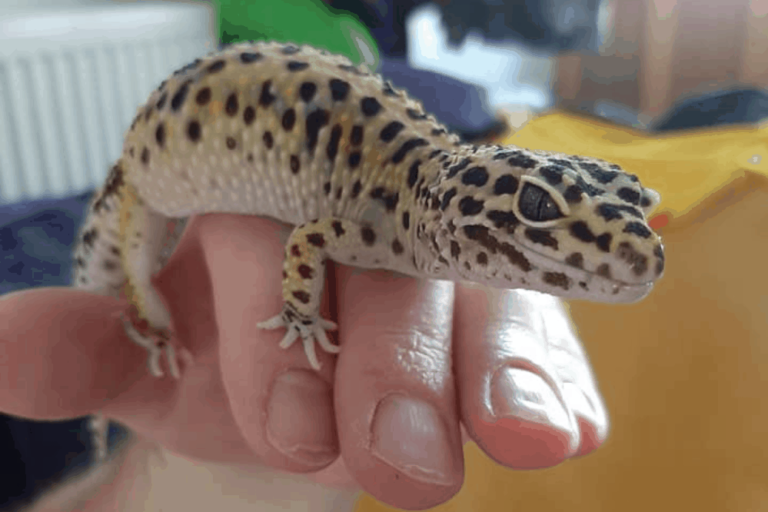Do Leopard Geckos Have Teeth: Unveiling The Truth
As I peered into the glass enclosure of my pet leopard gecko, a curious question crossed my mind: “Do leopard geckos have teeth?” Little did I know that this seemingly simple query would lead me on an expedition into the fascinating world of reptilian dentition.
I’m observing my gecko, Leo, as he deftly catches a cricket with his lightning-fast strike. Yes, Leopard geckos have lots of tiny cone-shaped teeth in their mouths.
Most of these teeth, around 9-13, are in the upper part of their mouth, and the rest are either in the lower part or higher up in the mouth. Usually, they have more teeth on top than on the bottom. Normally, they have about 100 teeth, but some may have fewer, like 50 or more
Join me on this captivating journey as we explore the remarkable teeth that empower these reptiles to thrive in their role as insect-hunting marvels. Together, we’ll uncover the secrets of their dental anatomy
Mouth structure of gecko:
| Feature | Description |
| Teeth | Multiple rows of small, sharp, pleurodont teeth are present. These teeth are crucial for capturing, holding, and tearing apart prey. They are anchored to the inner side of the jawbone. |
| Tongue | The tongue is relatively large and fleshy, serving not only for tasting and manipulating food but also for cleaning the eyes, a unique behavior in these reptiles. |
| Palate | The palate, or the roof of the mouth, has ridges and is typically smooth. It assists in manipulating and positioning food for consumption. |
| Gums | Gums encase the base of the teeth. Healthy gums should appear pink and free from signs of inflammation, swelling, or infection. |
| Salivary Glands | Salivary glands produce saliva, which moistens and lubricates food during consumption. Saliva also plays a role in digestion. |
| Soft Tissues | Soft tissues include the inner cheeks and the fleshy part around the teeth, aiding in containing and manipulating food during feeding. |
| Jaw Muscles | Powerful jaw muscles enable efficient clamping down on prey. These muscles are pivotal for the gecko’s feeding process. |
Why Do Leopard Geckos Have So Many Teeth?
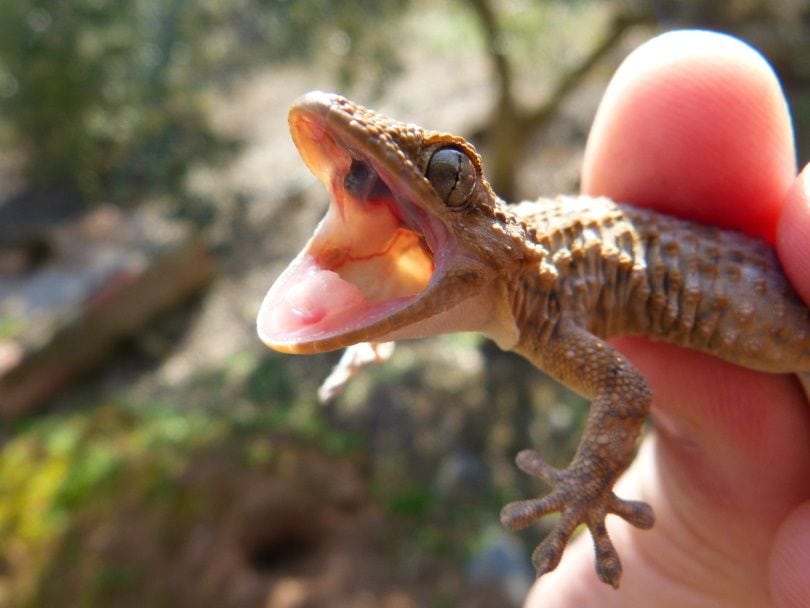
Feeding Strategy: Leopard geckos are insectivores, which means their primary diet consists of insects and other small invertebrates. Their numerous teeth are well-suited for grasping and holding onto small prey items. The sharp teeth help them tear apart their food into smaller, more manageable pieces.
Regeneration: They , like many reptiles, continuously grow and shed teeth throughout their lives. This ability to regenerate teeth is essential for maintaining functional dentition, especially since their teeth can wear down over time due to the abrasive nature of their diet.
Replacement: Also, have several rows of teeth, and when one tooth is damaged or lost, a new one quickly replaces it. This adaptation ensures that they always have functional teeth for hunting and eating.
Defense: While they are not typically aggressive, they may bite if they feel threatened or cornered. Having numerous teeth can make their bite more effective as a defensive mechanism.
Why do Leopard Geckos Replace Teeth?
Leopard geckos have a unique dental feature called polyphyodonty, setting them apart from animals with just two sets of teeth (diphyodonts). This means they replace their teeth continuously.
In this process, new teeth grow behind the old ones in their jaw. Over a few months, the new teeth push forward, causing the old ones to move to the front and eventually fall out. This cycle usually happens every 3-4 months.
Several factors drive this tooth replacement in leopard geckos, like their lifespan and the constant wear and tear from their diet. While some scientists suggest that stem cells may initiate this process, there’s no solid proof.
Typically, the new teeth grow beneath the jaw’s surface, pushing through the tissue as they replace the older teeth. This mechanism ensures that leopard geckos always have functional teeth.
What are the key steps for maintaining the dental health of leopard geckos?
Balanced Diet: It’s crucial to provide your leopard gecko with a well-rounded diet rich in calcium and low in phosphorus. Insects like crickets, mealworms, and waxworms serve as excellent sources of protein and essential calcium for their teeth and overall health.
Gentle Dental Care: While not typically necessary, if you notice any food particles or debris stuck in their teeth, a soft-bristled toothbrush can be gently used to clean their teeth. However, exercise caution to avoid harming their delicate dental structures.
Appropriate Toothpaste: Choose toothpaste specially formulated for leopard geckos, as human toothpaste may contain harmful substances that can be toxic to them. Ensuring their toothpaste is safe is paramount.
Hydration: Always provide clean, fresh water for your leopard gecko. Adequate hydration is vital not only for overall health but also for rinsing away any food particles or debris that may get caught in their teeth. Neglecting this can lead to conditions like mouth rot.
Veterinary Check-ups: Regular visits to a veterinarian specializing in reptile care are essential. These check-ups will help ensure your leopard gecko’s teeth are in good health, free from any dental issues that might affect their well-being.
What Type Of Teeth Do Leopard Geckos Have?
They exhibit polyphyodonty, a fascinating dental characteristic where their teeth are in a constant state of renewal, with their entire set of teeth replaced approximately every 3 to 4 months.
Additionally, what sets leopard geckos apart in this regard is their pleurodont teeth. These teeth, characterized by longer roots fused to the inner side of the jawbone, enable the continuous replacement of teeth even into adulthood. This contrasts with acrodont teeth, which have shorter roots and are not replaceable once an animal reaches maturity.
Upon closer examination, one can observe similarities between leopard gecko teeth and our own. Both feature an enamel covering the dentin, anchored firmly to the jawbone by roots.
However, the remarkable difference lies in quantity – they possess three times the number of teeth compared to humans. Consequently, these teeth are highly specialized for grasping and securing prey, unlike our teeth, which are designed primarily for cutting and chewing food.
This unique dental adaptation is a testament to the its remarkable ability to thrive in its natural habitat by effectively capturing and consuming its insect prey.
What are the signs of mouth rot in leopard geckos, and how can it be prevented?
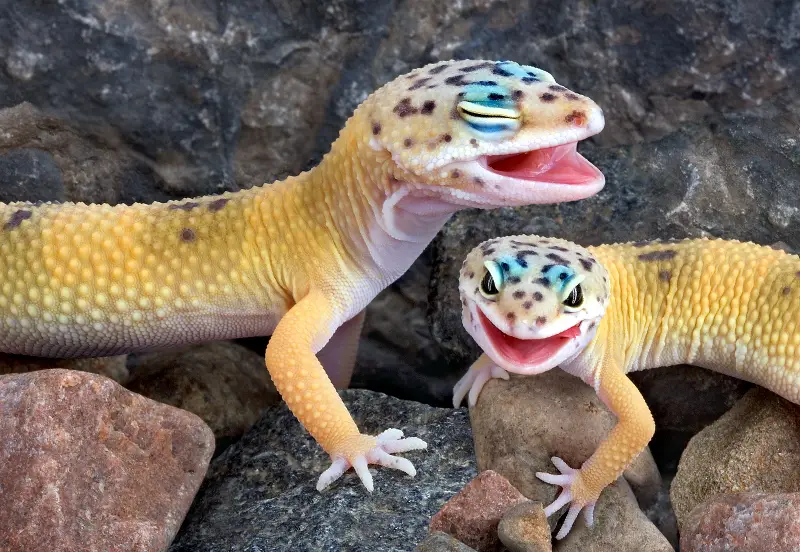
To begin, it’s crucial not to unnecessarily fret over potential issues when your pet is content, healthy, and displaying normal behavior. However, it’s wise to acquaint yourself with the telltale signs of mouth rot, a condition you should be able to identify.
Mouth rot typically arises from a bacterial infection, often originating from an infected lesion or food trapped inside the mouth. Adhering to proper husbandry practices usually safeguards against this potentially fatal condition.
Now, let’s delve deeper into the causes and symptoms.
Dangers of an Inadequate Diet:
Even well-intentioned but inexperienced pet owners may inadvertently provide their lizards with an improper diet. Just because a reptile accepts a “treat” doesn’t guarantee it’s healthy. Soft canned foods and sugary fruits can lead to teeth and gum issues, predisposing them to mouth rot. An invaluable feeding tip is gut loading, a process involving feeding live insects nutritious food 12 hours before offering them to Leo.
A Clean Habitat Is Critical:
Safeguarding Leo’s habitat’s cleanliness is paramount to keep harmful bacteria at bay. Bacteria thrive in unclean environments, underscoring the importance of maintaining a sanitary enclosure.
Additionally, adhering to proper heating and lighting conditions contributes significantly to preventing mouth rot in pet lizards.
Visible Signs of Inflammation:
Another potential indicator of mouth rot is observable inflammation, often presenting as swelling in the face, mouth, or head area. Regularly inspecting for signs of inflamed mouth tissue around your pet’s teeth is a prudent practice. Be vigilant for the secretion of fluids, especially foul-smelling yellow pus around the nose.
Also, a visibly swollen head and face generally signify an advanced stage of mouth rot. As a responsible pet owner, it’s essential to promptly identify and address milder symptoms (as discussed next).
Other Indicators to Be Mindful Of:
Should Leo exhibit one or more of the following four signs, it’s imperative to skip online research and consult a qualified veterinarian without delay:
- Reduced or no water intake
- Loss of appetite
- Thick saliva around the mouth
- Dead-looking, foul-smelling tissue inside the mouth.
FAQs
What Happens to the Old Teeth?
Geckos continually shed and replace their teeth throughout their lives. When an old tooth falls out, a new one grows in to take its place.
How Similar Are Leo’s Denticles to Human Teeth?
Leopard gecko teeth, often referred to as denticles, are not similar to human teeth in structure or function. They are designed for gripping and tearing prey.
How Sharp Are A Leopard Gecko’s Teeth?
Leopard gecko teeth are sharp enough to effectively puncture and hold onto their prey, but they are not designed to cause harm to humans or other larger animals.
Can Leopard Gecko Teeth Pierce Human Skin?
No, While leopard gecko teeth are not typically strong enough to pierce human skin under normal circumstances, it’s still advisable to handle them with care to avoid potential scratches or bites.
Final words:
In conclusion, I’ve discovered that leopard geckos do indeed have teeth, and they’re quite remarkable. These tiny, conical teeth are essential for their survival as adept insect hunters.
As I explored their dental anatomy, I marveled at the rows of teeth in their upper and lower jaws, which enable them to secure and devour their prey with precision.
While the reasons behind variations in tooth count among individual geckos remain a mystery to scientists, one thing is certain: these teeth are indispensable for their survival. It’s fascinating to realize how these unique adaptations in the animal kingdom allow different species to thrive in their specific environments. Leopard geckos’ teeth serve as a testament to the incredible diversity and ingenuity found in nature, and I’m grateful for the opportunity to learn more about these remarkable reptiles.

